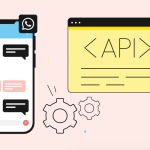Micro Frontends: A Complete Guide to Scalable and Modular Web Development
In recent years, the microservices architecture has gained significant traction in the development community, enabling teams to build, deploy, and scale applications quickly and efficiently. But while microservices have become a popular approach for backend development, frontend development has lagged behind in terms of modularity and scalability. Enter micro frontends, a new approach that applies the principles of microservices to the frontend development world.
In this article, we’ll explore micro frontends, how they work, and their benefits and drawbacks. We’ll also discuss real-world use cases of micro frontends, along with best practices for implementing them.
What are Micro Frontends?
Micro frontends are an architectural pattern for developing web applications that breaks down the frontend monolith into a collection of loosely coupled, independently deployable components. Each component, or “micro frontend,” is built and maintained by a separate team, and can be deployed and scaled independently. Micro frontends communicate with each other via a set of well-defined APIs, allowing them to work together seamlessly as a cohesive application.
To understand micro frontends in more detail, it’s helpful to compare them to the more traditional approach to frontend development, the “monolith” architecture. In a monolithic front end, all user interface components are bundled into a single codebase, which is developed, tested, and deployed as a single unit. This approach can be effective for smaller applications, but as the application grows, it becomes increasingly difficult to manage and scale.
Micro frontends, on the other hand, enable teams to break the front end into smaller, more manageable pieces that can be developed and deployed independently. This modular approach to development has several benefits, including improved maintainability, scalability, and flexibility.
How do Micro Frontends Work?
At a high level, micro frontends work by breaking down the user interface into a set of smaller, independent components that can be developed and deployed separately. Each micro frontend is responsible for rendering a specific part of the UI and communicates with the other micro frontends via a set of well-defined APIs.
To illustrate this concept, consider an example e-commerce application that includes a product search page, a product detail page, and a shopping cart. In a traditional monolithic architecture, all of these components would be bundled together into a single codebase and would be developed and deployed as a single unit.
In a micro frontend architecture, however, each of these components would be developed and maintained by a separate team and would be deployed and scaled independently. The product search page, for example, might be built using React, while the product detail page might be built using Angular. The shopping cart might be built using Vue.
Each of these micro frontends would communicate with each other via a set of well-defined APIs, allowing them to work together seamlessly as a cohesive application. For example, when a user adds a product to their cart on the product detail page, the shopping cart micro frontend would be notified via an API call and would update the cart accordingly.
Advantages of Micro Frontends
- Increased Agility
One of the main benefits of micro frontends is increased agility. By breaking a large front-end application into smaller, more modular components, development teams can work on these components independently. This enables them to make changes and deploy updates more quickly, without having to wait for the entire application to be built and tested.
For example, consider a large e-commerce website that includes a product catalog, shopping cart, and payment processing system. With a monolithic frontend architecture, any changes made to one part of the application would require the entire application to be rebuilt and tested before it could be deployed. This can be time-consuming and can slow down the development process.
However, with a micro frontend architecture, each component can be developed and deployed independently. This means that if a change is made to the product catalog, for example, it can be deployed quickly without affecting the other parts of the application. This makes it easier for development teams to respond to changing business needs and user requirements.
- Better Scalability
Another advantage of micro frontends is better scalability. As frontend applications grow in size and complexity, it can become difficult to manage the codebase and ensure that the application performs well. With a micro frontend architecture, teams can scale individual components independently of each other, making it easier to manage and maintain the application.
For example, imagine a large e-commerce website that experiences a sudden surge in traffic due to a sale or promotional event. With a monolithic frontend architecture, the entire application would need to be scaled to handle the increased traffic, even if only a small part of the application is experiencing high traffic.
However, with a micro frontend architecture, teams can scale individual components independently of each other. This means that if the product catalog is experiencing high traffic, it can be scaled independently of the shopping cart and payment processing components. This makes it easier to manage traffic spikes and ensures that the application performs well under load.
- Improved Reusability
By breaking the front end into smaller, more modular components, teams can reuse code across different parts of the application. This can result in less code duplication, which can lead to improved maintainability and reduced development time.
For example, imagine a large e-commerce website that includes a product catalog, shopping cart, and payment processing system. With a monolithic frontend architecture, it can be difficult to reuse code across different parts of the application, as the code is tightly coupled together.
However, with a micro frontend architecture, components can be developed in isolation and then reused across different parts of the application. This can lead to improved code quality, as developers can focus on developing smaller, more focused components, rather than trying to build a large, complex application.
- Better Team Collaboration
Another advantage of micro frontends is that they can facilitate better collaboration between development teams. By breaking down a large application into smaller components, teams can work independently of each other, while still ensuring that the application functions as a whole.
For example, imagine a large e-commerce website that includes a product catalog, shopping cart, and payment processing system. With a monolithic frontend architecture, it can be difficult for different teams to work independently of each other, as any changes made to one part of the application can affect other parts of the application.
However, with a micro frontend architecture, different teams can work on different components of the application independently of each other. This can lead to improved collaboration and better communication between teams, as each team can focus on their specific area of expertise
Use cases of Micro Frontends
- E-commerce websites: With the ability to use different technologies and frameworks for each component, e-commerce websites can use micro frontends to create a seamless user experience. For example, a product listing component could be built using React, while a shopping cart component could be built using Angular.
- Enterprise applications: Micro frontends can be used to break up large, monolithic enterprise applications into smaller, more manageable components. This can help reduce complexity and make the application easier to maintain.
- Dashboards and data visualization: Micro frontends can be used to create custom dashboards and data visualizations, with each component using a different technology or framework to provide specialized functionality.
- Social media platforms: Micro frontends can be used to build social media platforms, where different components can be built using different technologies to provide specialized functionality, such as a news feed component built using React, and a messaging component built using Vue.js.
Companies Using Micro Frontends
Netflix
Netflix is a company that has been experimenting with Micro Frontends for a few years now. They’ve developed a platform that allows them to create and deploy independent, self-contained front-end modules that can be developed by different teams, in different programming languages and frameworks, and still be integrated into the main platform.
One example of how Netflix has used Micro Frontends is with its signup process. The signup process for Netflix is composed of several steps, each step being a self-contained Micro Frontend. This allows the Netflix team to make changes to each step independently, without having to worry about how the changes will affect the entire signup process.
Another example of how Netflix has used Micro Frontends is its content management system. Netflix has thousands of titles in its library, and they use Micro Frontends to manage the different types of content, such as movies, TV shows, and documentaries.
SoundCloud
SoundCloud is a music streaming platform that has also adopted Micro Frontends. They use Micro Frontends to split their platform into smaller, more manageable pieces, each of which can be developed and deployed independently.
One example of how SoundCloud has used Micro Frontends is with its track player. The track player is a self-contained Micro Frontend that can be embedded into any part of the platform. This allows the SoundCloud team to update the track player without having to worry about how the changes will affect the rest of the platform.
Another example of how SoundCloud has used Micro Frontends is with its commenting system. The commenting system is a self-contained Micro Frontend that can be embedded into any part of the platform. This allows the SoundCloud team to update the commenting system without having to worry about how the changes will affect the rest of the platform.
Zalando
Zalando is a fashion e-commerce platform that has also adopted Micro Frontends. They use Micro Frontends to split their platform into smaller, more manageable pieces, each of which can be developed and deployed independently.
One example of how Zalando has used Micro Frontends is with their checkout process. The checkout process is composed of several steps, each step being a self-contained Micro Frontend. This allows the Zalando team to make changes to each step independently, without having to worry about how the changes will affect the entire checkout process.
Another example of how Zalando has used Micro Frontends is with its product pages. The product pages are composed of several Micro Frontends, each of which handles a different part of the page, such as the product description, the product images, and the customer reviews.
IKEA
IKEA is a well-known furniture company that has been using micro frontends since 2018. They started with a monolithic front-end application, but as the application grew, it became difficult to manage. They decided to break the frontend into smaller parts, each with its own team responsible for development and deployment.
One example of a micro frontend at IKEA is its product page. The product page is composed of several smaller components, each responsible for a different part of the page. The components communicate with each other using APIs, allowing for more flexibility and faster iteration.
UPWORK
Upwork is a popular freelance marketplace that uses micro frontends to manage its complex frontend. They have a large team of developers working on different parts of the application, and micro frontends allow each team to work independently without worrying about breaking other parts of the application.
One example of a micro frontend at Upwork is their job search page. The job search page is composed of several smaller components, each responsible for a different part of the page. The components communicate with each other using APIs, allowing for more flexibility and faster iteration.
Conclusion
Micro frontends offer many advantages, including flexibility, maintainability, and scalability. By breaking up a monolithic frontend into smaller, more manageable components, teams can work independently, using the technology and frameworks that best suit their needs.
While micro frontends are not without their challenges, such as increased complexity and the need for a well-defined communication protocol, they can offer significant benefits in the right circumstances. With the rise of serverless architecture and the increasing demand for flexible and scalable web applications, micro frontends are an approach worth considering for your next project.
Still Curious? Visit my website to know more!
For more interesting Blogs Visit- Utkarsh Shukla Author, Utkarsh Shukla Blogs
Add Comment
You must be logged in to post a comment.








